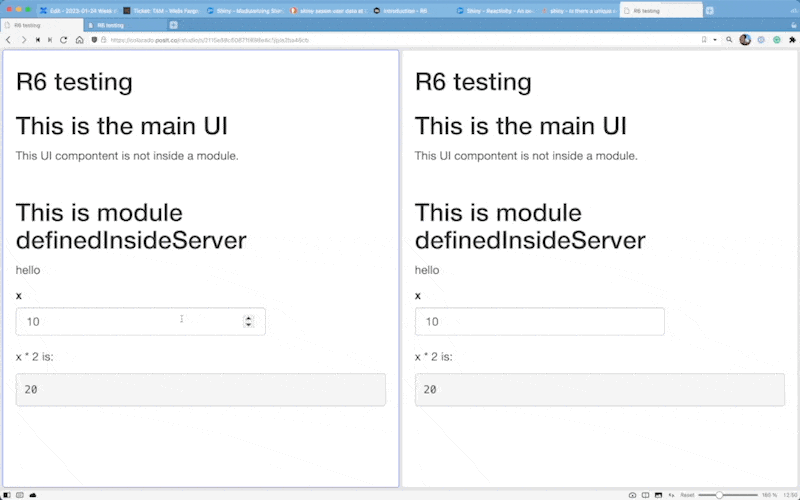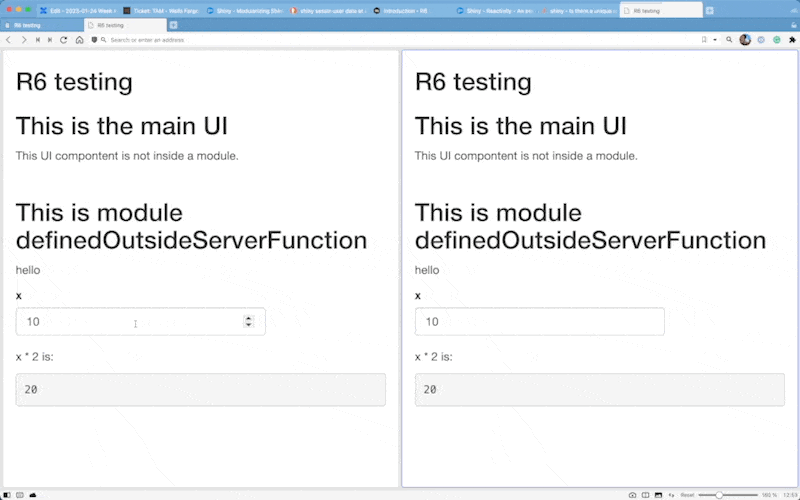This repo demonstrates an approach to use R6Class shiny modules without sharing state.
The key to not share any state is to instantiate the module inside of the server function. See app-no-shared-state.R. The downside of this approach is that you instantiate the object twice. This could slow down the performance of the app.
shiny::runApp('app-no-shared-state.R')In the gif below two different sessions are running. Notice that the changes to the input box in one session have no effect on the other session.
In this example, the class is instantiated outside of the server function. See app-shared-state.R.
shiny::runApp('app-shared-state.R')In the gif below two different sessions are running. Notice that when changes are made to the session on the right hand side the value also changes on the left hand side.
In this example, we do not use R6 at all. Both the UI and the server as defined only as functions. See app-no-r6.R.
shiny::runApp('app-no-r6.R')
